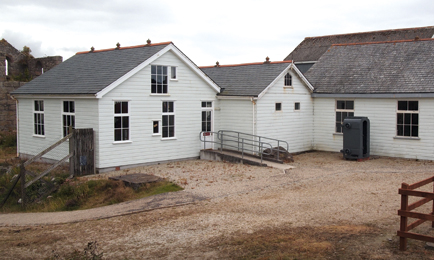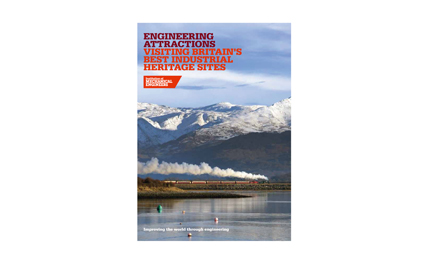The original winder engine was supplied by Holman Bros
First impressions may not be kind to this understated museum, but perseverance pays off. The final area of the King Edward Mine Museum in Camborne is a rare thing – an enthralling demonstration of Victorian engineering ingenuity using original, 100-year-old mining machinery, much of it the last working examples of its kind.
The King Edward Mine is an inheritance from the Camborne School of Mines. The mine has a long history. It was first a small commercial tin and copper mine, of which there were many in Cornwall during the 18th century. By the turn of the 20th century mining in Cornwall had all but disappeared, but King Edward was re-equipped and reopened by the school in 1901 and used for teaching, ore dressing and surveying until 1974.
The underground part of the mine was abandoned in 1921, but the surface buildings and equipment were retained. Much of the plant that was installed in 1901 is still present, or has been recovered and restored by volunteers. The museum is therefore uniquely placed to provide an insight into the workings of the processing, power, transport and air supply elements of a mine.
The first part of the museum lays out the various plant, equipment and processes that were used at the mine. Soon you will be familiar with kibbles, skips and man engines. The beam engine and air compressor are excellent examples of their type and accompanied by plenty of detailed information about their manufacturer, Holman Bros of Camborne, a company that was once a big supplier in the mining sector. The section about the firm is extensive, with advertising paraphernalia and examples of equipment.
The exhibition goes on to depict how life treated the mine’s workers. There are interesting anecdotes about working practices, such as how eucalyptus oil was pumped into the air system to alert miners of an emergency.
The museum does then become a little self-indulgent in this section. There is a wealth of information about the mine’s background and development, and the visitor can feel bogged down in parochial minutiae. Unless studying the region or the history of mining in depth, it’s doubtful you will linger.
However, it’s in the mill, the final leg of a visit, where the museum comes alive. The mill is equipped with the processing machinery that was originally manufactured and installed more than 100 years ago. Today, the machinery can be seen working courtesy of one of the museum’s volunteer guides.
The processing starts at the Californian stamps, which were used to smash the ore into three grades. This was then treated at the shaking tables, and further grading was performed by a round frame and flotation cells. King Edward is the only place in the world you can see a Frue Vanner sifting machine working.
Seeing these machines working with their simple but significant innovations is a treat.
If you are looking for a demonstration of the machines employed in mining at the beginning of the 20th century, it’s doubtful you will do better elsewhere.
King Edward has plans for improvements and refurbishments, which should see the number of visitors increase. For the time being, though, it’s a hidden gem, albeit with a few rough edges.

On the surface: The mine museum is housed in windswept wooden and stone buildings
5 things to see
1. Processing mill: A volunteer guide should be able to switch on the rare and 100-year-old machinery and talk you through how it works.
2. The Cornish countryside: A monument to this once vital local industry. It’s possible to see 12 engine houses from the museum.
3. Horizontal steam engine: Drove the machinery in the mill via a flat belt until electrification.
4. The Californian stamps: The only full-size set in Europe – only run on special occasions.
5. The cage: The last to be used to transport men in a mine in Cornwall.
» For more details, see: www.kingedwardmine.co.uk
 Fascinated by industrial history?
Fascinated by industrial history? Read all about the best museums, steam railways and boat lifts in the uk.
The IMechE’s new book, Engineering Attractions, features 100 full-colour pages.
Priced £9.95, with a discount for IMechE members.
Go to www.imeche-heritage-book.co.uk or call 020 7045 7510 to order your copy